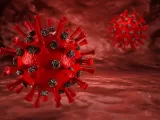
The Genetic Landscape of “Magic” Mushrooms Paves the Way for Tailored Fungi
December 14, 2023A study led by the community has uncovered an extensive repository of genomic data encompassing more than 100 strains of “magic” mushrooms. Published in Current Biology, the research elucidates how the domestication of Psilocybe cubensis has diminished the genetic diversity within the mushroom, presenting an opportunity for cultivators to develop novel strains with distinct characteristics.
Table of Contents
Refinement through Selective Breeding
In the quest to transform wild organisms into consumable products, agriculturalists have employed meticulous breeding practices to instill specific traits. Just as the crispness of a Granny Smith apple or the starchy texture of a Russet potato remains consistent within a cultivar, this selective breeding has extended to various natural products. Alistair McTaggart, a researcher at the University of Queensland, notes that this process has led to highly homozygous genomes in the case of magic mushrooms.
The Impact of Genetic Uniformity
The study examines 86 commercially cultivated strains, revealing a reduced genetic diversity in these mushrooms. McTaggart underscores that this diminished diversity influences the production of psychoactive molecules, such as psilocybin, resulting in a stabilization of psychoactive effects due to fewer opportunities for genetic variation.
Unraveling the Magic
The psychoactive properties of magic mushrooms are rooted in a defense mechanism evolved over millennia. Psilocybin, linked to the fungi’s evasion of mushroom-eating insects, appears to suppress the appetite of these predators. The genetic diversity in psilocybin genes and its contribution to the subjective experience of a magic mushroom trip remain unclear, but McTaggart emphasizes that studying genetically diverse mushrooms could provide insights into this phenomenon.
Collaboration with Underground Growers
Despite legal risks associated with possessing magic mushrooms, underground Australian mushroom growers contributed 38 wild psychedelic mushroom isolates to the study. These natural fungi exhibited greater genetic diversity compared to commercial cultivars, possibly recovering from a bottleneck event during their introduction to Australia. McTaggart believes that studying these diverse mushrooms could shed light on the impact of genetic diversity on psychedelic experiences.
Towards Designer Mushrooms
McTaggart has joined Funky Fungus, a startup exploring the potential of designer mushrooms. While he anticipates these custom fungi to be safe, he highlights the diversity present in the world of psychedelic fungi, citing a study on Psilocybe subaeruginosa, a sister mushroom, which revealed genotypes capable of inducing temporary paralysis.
Future Mushroom Mysteries
With support from citizen scientists, McTaggart plans to delve into other mushroom mysteries, aiming to enhance our understanding of how genetic diversity in psilocybin-producing genes influences experiences and translates in natural ecosystems.
[Reference: McTaggart AR, McLaughlin S, Slot JC, et al. Domestication through clandestine cultivation constrained genetic diversity in magic mushrooms relative to naturalized populations. Current Biology. 2023;33(23):5147-5159.e7. doi:10.1016/j.cub.2023.10.059]


